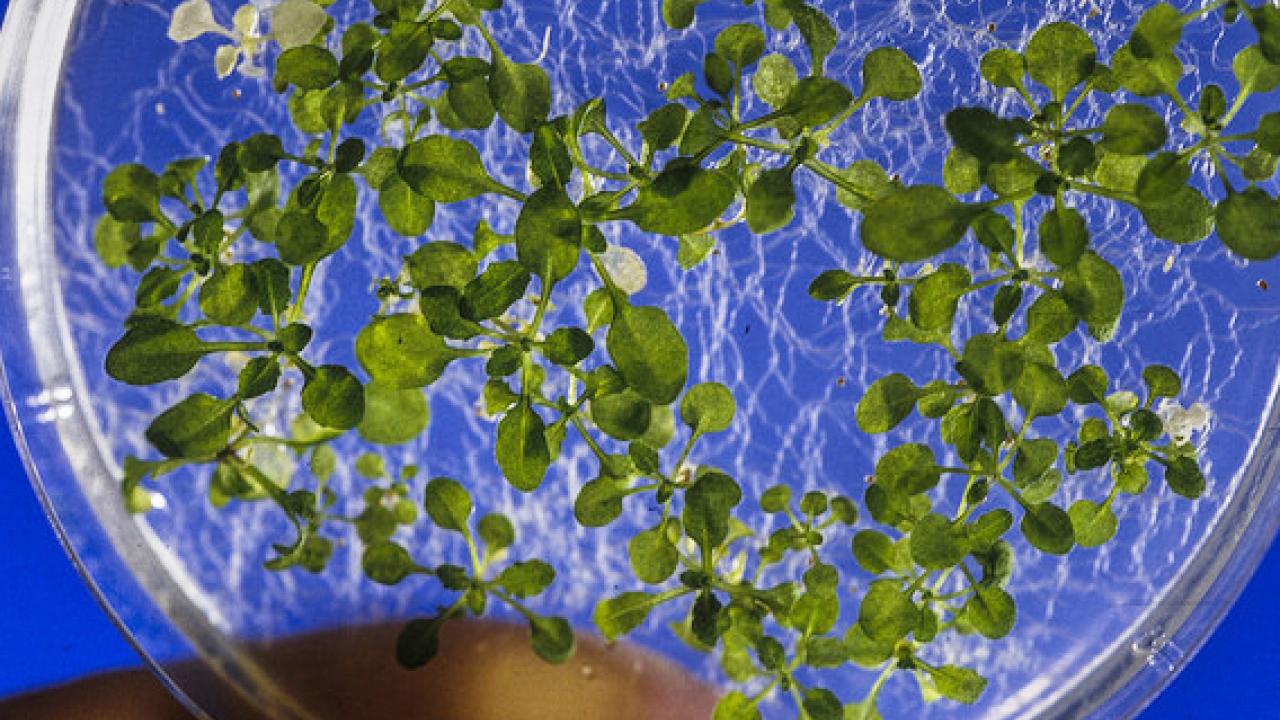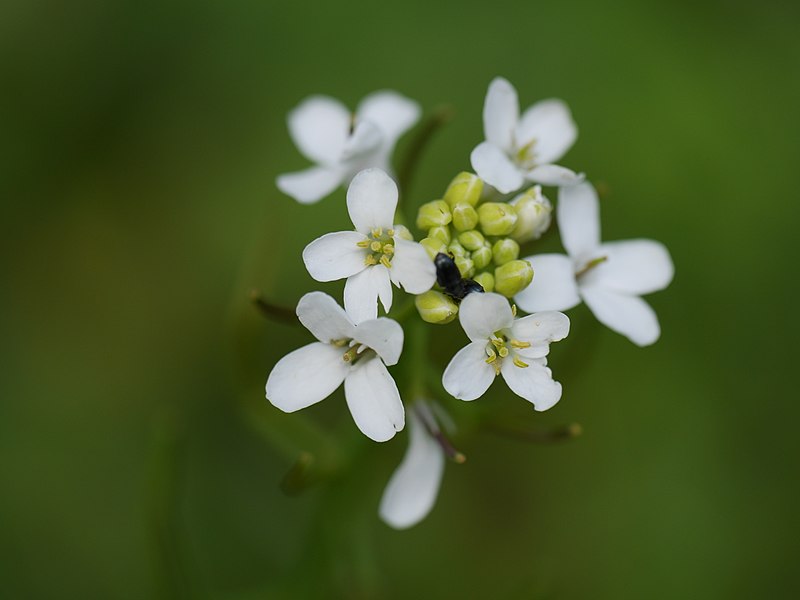
Untangling the Complexity of the Plant Circadian Clock
Quick Summary
- Plant circadian clocks are among the most complex on Earth
- New research suggests this complexity helps them thrive under diverse environmental conditions
- Researchers found mutant plants--while appearing normal--lost function under environmetal stress
The Earth’s 24-hour rotation period is woven into the genetics of its creatures, controlled by a biochemical timer known as the circadian clock. Our own circadian clock—in constant interaction with the environment around us—governs many physiological processes, telling us when to sleep, wake and eat. But compared to that of humans, the plant circadian clock is uniquely—and at first glance, needlessly—complex.
In a study appearing in Proceedings of the National Academy of Sciences, Professor Stacey Harmer, Department of Plant Biology, and her colleagues found that the complexity of the plant circadian clock helps plants function rhythmically across a range of environments, ensuring that these immobile organisms can survive and thrive under many conditions.
Model mutants
Using mathematical modeling and experimental approaches, the team investigated the roles of several regulatory proteins in the plant circadian clock of Arabidopsis thaliana. At least 20 different proteins and an even greater number of feedback loops comprise the plant circadian clock, functioning as on- and off-switches for various genes that ensure proper biological functions through the day and night.

“There is no a priori reason for the plant clock to be so complex, as we know that other kinds of organisms have perfectly good clocks that are much simpler,” said Harmer. “What is interesting about our study is that our data suggests a reason for this complexity—that the complexity helps plants deal with environmental variation.”
To investigate the seemingly-redundant proteins, the team developed an assortment of mutant plants, focusing on LHY- and RVE8-type Mybs, which are proteins that act within the plant circadian clock. According to Harmer, RVE8-type Mybs mutants tend to have sluggish clocks, developing more slowly but growing larger than their wild counterparts. LHY-type mutants tend to have faster clocks, transitioning between vegetative and flowering states quickly and developing smaller organs.
But what would happen in plants with both LHY- and RVE8-type Mybs mutations?
Computer modeling suggested these offspring mutants would function properly. But what played out in reality was entirely different.
An ancient origin of plant rhythm?
During the experiment, Harmer and colleagues confirmed their hypothesis that Arabidopsis thaliana mutants—with both LHY-type and RVE8-type Mybs mutations—shifted back to a more wild-type circadian period, with normal flowering time, organ sizes and clock pace.
“For me, one of the surprising findings was how ‘normal’ these quintuple mutants looked under stable lab conditions,” said Harmer. “This is in contrast to the parental mutants, which clearly look different from wild-type.”

While the offspring mutants appeared normal, there was more going on beneath the surface.
In controlled environments, wild-type Arabidopsis thaliana can thrive under many light conditions and at temperatures ranging between roughly 53 and 90 degrees Fahrenheit. This robustness wasn’t present in the study’s quintuple mutant plants.
“Under mild temperature stress, the clock in the quintuple mutant just stopped working,” said Harmer. “This suggests that the complexity of the plant clock is really important for function under the range of conditions that plants are regularly exposed to.”
According to the study’s authors, LHY- and RVE8-type Mybs are found in different species across the land plant lineage and can even be found in some unicellular green algae, suggesting the robust functionality of the plant circadian clock has ancient origins.
According to Harmer, this research may ultimately help with crop improvement.
“Changes in clock genes can alter both plant flowering time and resistance to a variety of environmental stresses, traits of key agronomic importance,” she said. “Our findings suggest ways in which these traits might be genetically separated, which could be really useful for plant breeders.”
Researchers Akiva Shalit-Kaneh and Roderick W. Kumimoto of the Harmer Lab and Associate Professor Vladimir Filkov, Department of Computer Science, contributed to the study, which was supported by the National Institutes of Health and the United States Department of Agriculture.

